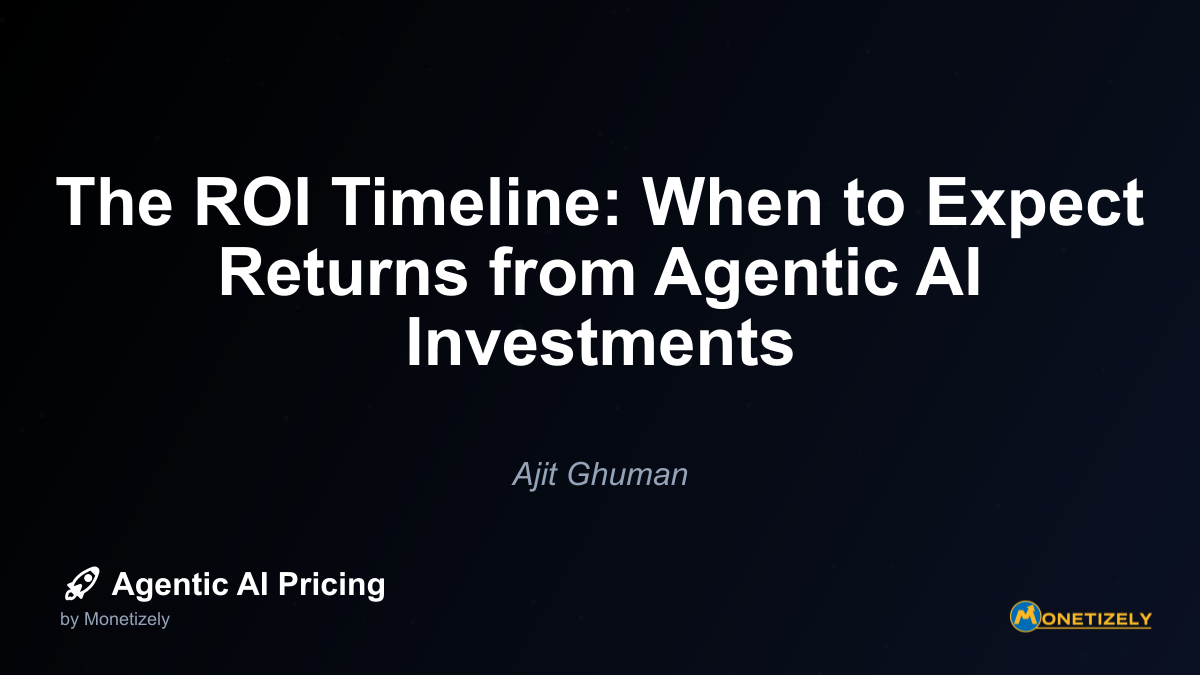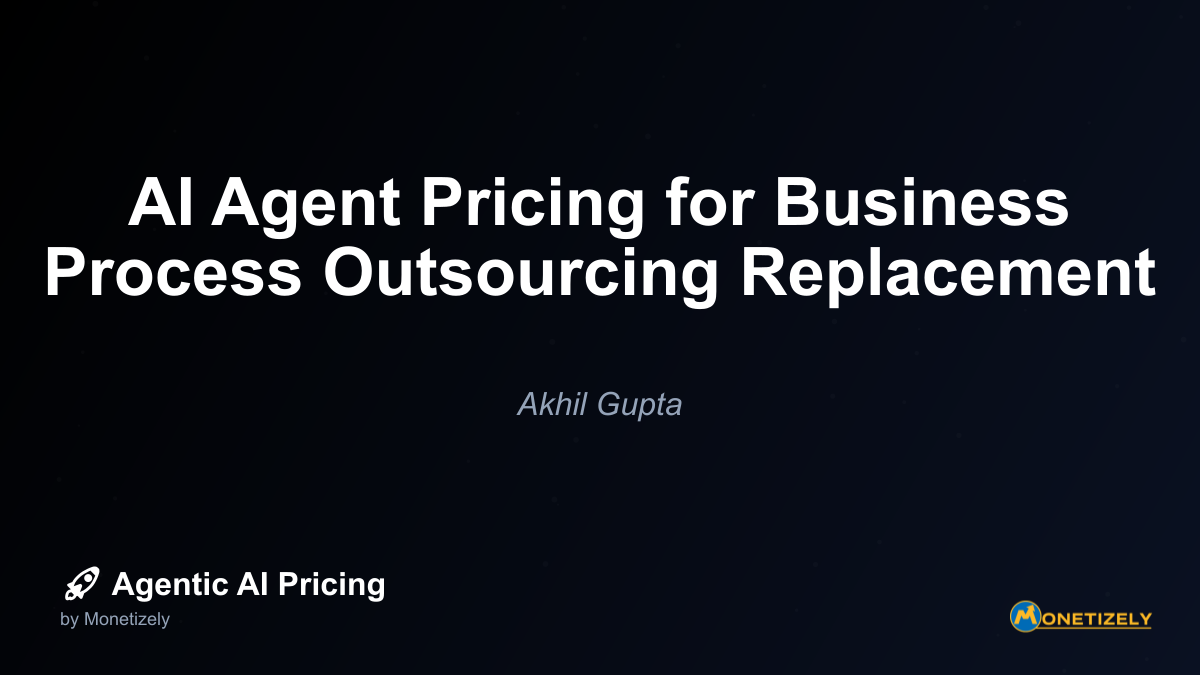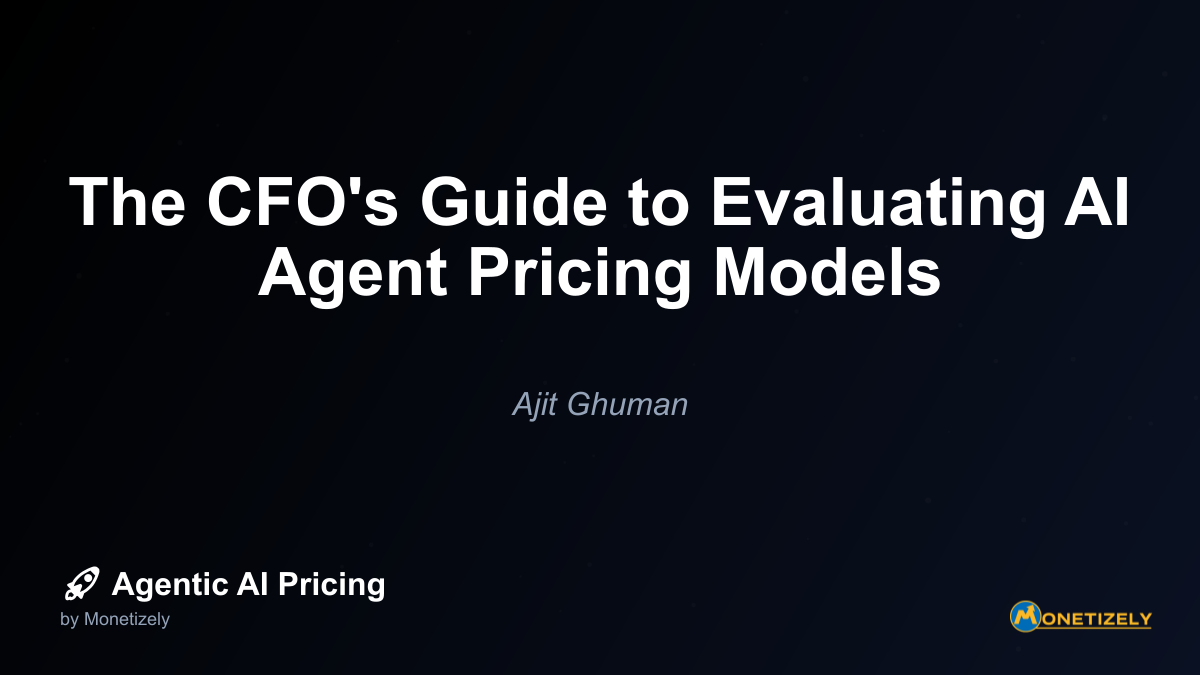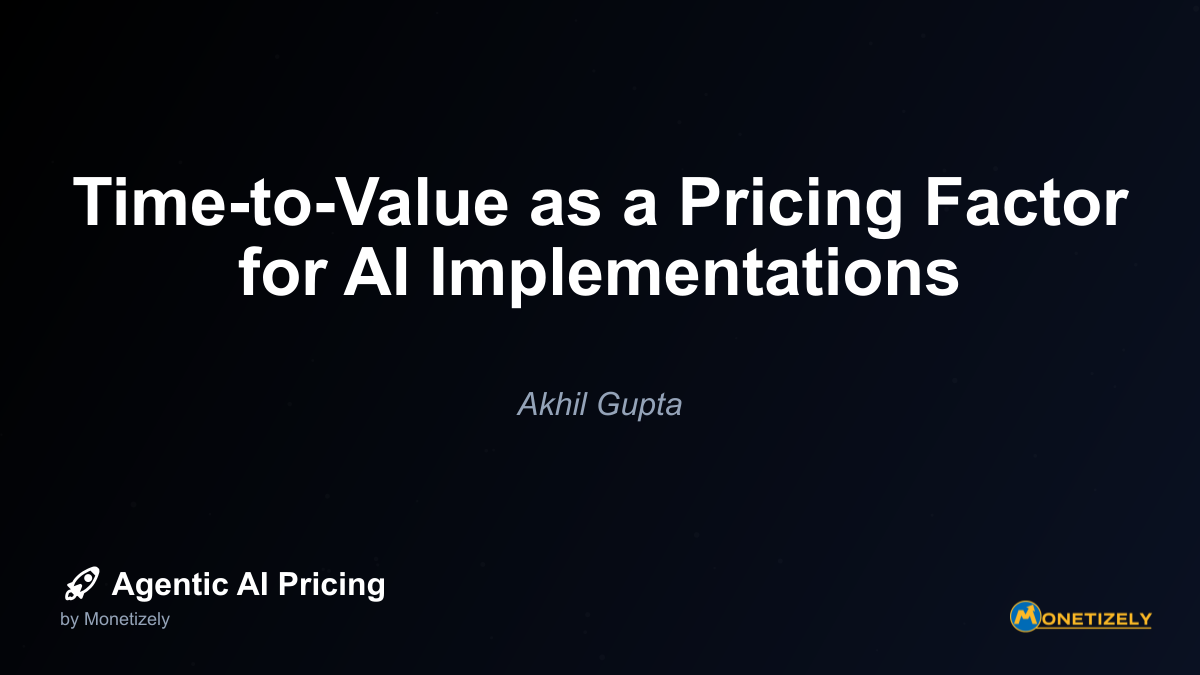· Ajit Ghuman · ROI & Value · 6 min read
Creating Executive Dashboards for AI ROI Monitoring
AI and SaaS Pricing Masterclass
Learn the art of strategic pricing directly from industry experts. Our comprehensive course provides frameworks and methodologies for optimizing your pricing strategy in the evolving AI landscape. Earn a professional certification that can be imported directly to your LinkedIn profile.
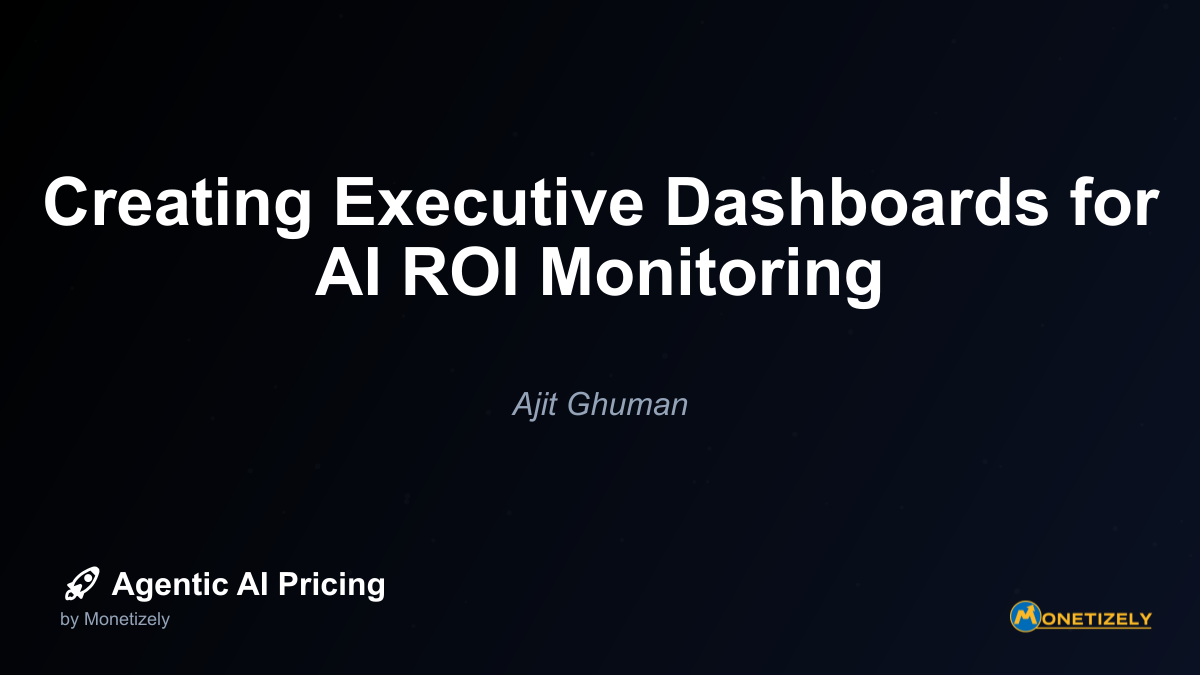
Implementing Effective Data Collection for AI ROI Measurement
Creating insightful dashboards requires robust underlying data collection systems. Organizations must establish systematic processes to gather both quantitative and qualitative information about AI performance.
Automated Metric Collection
Wherever possible, organizations should automate the collection of performance data directly from AI systems:
- API integration with model serving infrastructure to capture usage patterns
- Automated logging of computational resource consumption
- Performance monitoring tools that track model accuracy and drift
- Integration with business process systems to capture operational impacts
This automation reduces reporting burden while improving data reliability and consistency.
Structured Human Feedback Loops
Some AI value metrics require human assessment. Structured feedback mechanisms should be established:
- Regular surveys of system users to assess qualitative impacts
- Structured interviews with business stakeholders to capture observed benefits
- Facilitated workshops to identify unexpected value creation
- Expert reviews to evaluate quality improvements
These qualitative inputs provide essential context for interpreting quantitative performance data.
Baseline Establishment Protocols
Meaningful ROI measurement requires rigorous baseline establishment:
- Documentation of pre-AI performance metrics across relevant dimensions
- Controlled A/B testing where feasible to isolate AI impact
- Synthetic control methodologies for situations where direct testing isn’t possible
- Regular baseline updates to account for changing business conditions
Without these baselines, organizations risk misattributing general performance changes to AI implementations.
How to Address Common AI ROI Measurement Challenges
Several persistent challenges complicate AI ROI measurement. Effective dashboards must incorporate strategies to address these issues:
Challenge 1: Attribution Complexity
When AI operates within complex business systems, isolating its specific contribution can be difficult. Effective approaches include:
- Multi-variable analysis to control for non-AI factors
- Incremental deployment strategies that create natural comparison groups
- Careful documentation of concurrent changes that might impact performance
- Sensitivity analysis showing possible ranges of attribution
Dashboards should acknowledge attribution uncertainty while providing best-available estimates based on rigorous methodology.
Challenge 2: Delayed Value Realization
AI benefits often emerge gradually as systems learn and organizations adapt. Dashboards should:
- Show expected value realization timelines based on implementation phase
- Track leading indicators that predict future value creation
- Highlight capability development that enables future returns
- Provide milestone-based progress metrics during initial implementation
These approaches help maintain stakeholder confidence during extended value realization periods.
Challenge 3: Evolving Use Cases
AI initiatives often evolve beyond their initial scope as organizations discover new applications. Dashboards should:
- Track scope evolution against original business cases
- Capture emergent value streams not anticipated in initial planning
- Show how capability development enables new use cases
- Compare actual versus planned implementation pathways
This flexibility helps organizations recognize and capitalize on unexpected value creation opportunities.
For a comprehensive guide to measuring ROI specifically for AI agent implementations, you can explore our detailed framework for AI agent ROI measurement, which provides additional metrics specifically tailored to agentic systems.
Best Practices for Dashboard Implementation and Evolution
Creating effective AI ROI dashboards requires thoughtful implementation approaches and continuous refinement:
Start With Executive Information Needs
Begin dashboard development by understanding key questions executives need answered:
- What specific decisions will the dashboard inform?
- What comparison points are most relevant for these decisions?
- What time horizons matter for different stakeholder groups?
- What level of detail is appropriate for different audiences?
This stakeholder-centered approach ensures dashboards deliver actionable insights rather than just interesting data.
Implement Iterative Development Cycles
Rather than attempting to build comprehensive dashboards immediately:
- Start with minimum viable metrics addressing critical questions
- Gather executive feedback on initial visualizations
- Progressively add metrics and visualization components
- Regularly review and retire metrics that no longer drive decisions
This evolutionary approach aligns dashboard capabilities with maturing AI implementations and changing business priorities.
Maintain Methodological Transparency
Executives must understand how ROI metrics are calculated to trust their validity:
- Document data sources and collection methodologies
- Explain attribution approaches and their limitations
- Clearly state assumptions underlying projections
- Provide access to more detailed methodological documentation
This transparency builds credibility and supports appropriate interpretation of dashboard insights.
Balance Standardization and Customization
Organizations implementing multiple AI initiatives benefit from:
- Standard core metrics applied consistently across projects
- Consistent visualization approaches for common metrics
- Project-specific extensions capturing unique value dimensions
- Flexible frameworks that accommodate different AI application types
This balanced approach facilitates portfolio-level analysis while recognizing the unique characteristics of individual AI implementations.
Integrating AI ROI Dashboards with Enterprise Performance Management
For maximum impact, AI ROI dashboards should connect with broader enterprise performance management systems:
Strategic Planning Integration
AI performance metrics should inform strategic planning processes:
- Feeding AI capability assessments into SWOT analyses
- Informing resource allocation decisions across technology portfolios
- Supporting build-versus-buy decisions for AI capabilities
- Guiding partnership and acquisition strategies
These connections ensure AI investments align with enterprise strategic direction.
Financial Planning and Analysis Alignment
ROI dashboards should connect with financial planning systems:
- Informing budget allocation for AI initiatives
- Supporting financial forecasting with AI performance trends
- Providing data for formal ROI and NPV calculations
- Tracking actual financial impacts against projected returns
These financial connections help justify continued AI investment in resource-constrained environments.
Risk Management Framework Connections
AI performance data should inform risk management processes:
- Highlighting dependencies on specific AI capabilities
- Identifying potential performance degradation scenarios
- Tracking technical debt accumulation in AI systems
- Monitoring compliance with governance requirements
These risk insights help organizations balance innovation with appropriate risk management.
Future Trends in AI ROI Monitoring
As AI implementation matures across industries, several emerging trends are reshaping ROI monitoring approaches:
1. Automated Value Discovery
Advanced analytics applied to business performance data can automatically:
- Identify correlations between AI activity and business outcomes
- Discover unexpected value creation patterns
- Suggest new metrics based on observed relationships
- Generate hypotheses about value mechanisms
These capabilities help organizations recognize value creation that might otherwise remain invisible.
2. Ecosystem Value Measurement
As AI increasingly operates across organizational boundaries, ROI frameworks are expanding to capture:
- Value created for ecosystem partners
- Network effects from multi-party AI systems
- Shared investment and benefit allocation models
- Competitive positioning within AI-enhanced ecosystems
These broader perspectives help organizations optimize AI investments for ecosystem advantage rather than just internal returns.
3. Capability-Based Valuation Models
Beyond immediate operational returns, organizations are developing frameworks to value:
- Organizational learning and capability development
- Option value created by initial AI implementations
- Competitive positioning benefits
- Innovation acceleration effects
These approaches recognize that some AI value manifests as enhanced organizational capabilities rather than direct financial returns.
4. Responsible AI Integration
ROI frameworks are increasingly incorporating responsible AI dimensions:
- Measuring fairness and bias metrics alongside performance indicators
- Tracking environmental impact of AI computing resources
- Assessing workforce impacts and transition effectiveness
- Monitoring compliance with emerging AI regulations
These expanded frameworks ensure organizations optimize for responsible value creation rather than narrow performance metrics.
Conclusion: From Measurement to Strategic Advantage
Executive dashboards for AI ROI monitoring represent more than just accountability tools. When thoughtfully designed and implemented, they become strategic assets that:
Accelerate Learning: By making value creation mechanisms visible, dashboards help organizations identify and replicate successful patterns.
Optimize Resource Allocation: Clear visibility into relative performance across initiatives enables more effective investment prioritization.
Build AI Credibility: Rigorous measurement builds organizational confidence in AI capabilities, supporting broader adoption.
Enable Value-Based Management: Connecting AI technical performance to business outcomes supports value-based rather than activity-based management.
Organizations that excel at AI ROI monitoring gain competitive advantages beyond the direct benefits of their AI implementations. They learn faster, allocate resources more effectively, and build stronger organizational capabilities for the AI-enabled future.
By implementing the frameworks and approaches outlined in this guide, organizations can transform AI ROI monitoring from a reporting exercise into a strategic capability that drives sustainable competitive advantage.
Co-Founder & CEO
Ajit is the author of Price To Scale, a top book on SaaS Pricing and is the Founder of Monetizely. Ajit has led and worked in pricing and product marketing at firms like Twilio, Narvar and Medallia. His work has been featured in Forbes and VentureBeat. Ajit regularly consults with software companies from Seed stage to post-IPO on pricing strategy. Ajit is also a highly-rated co-instructor for 'The Art of SaaS Pricing and Monetization' on Maven.
Pricing Strategy Audit
Let our experts analyze your current pricing strategy and identify opportunities for improvement. Our data-driven assessment will help you unlock untapped revenue potential and optimize your AI pricing approach.

